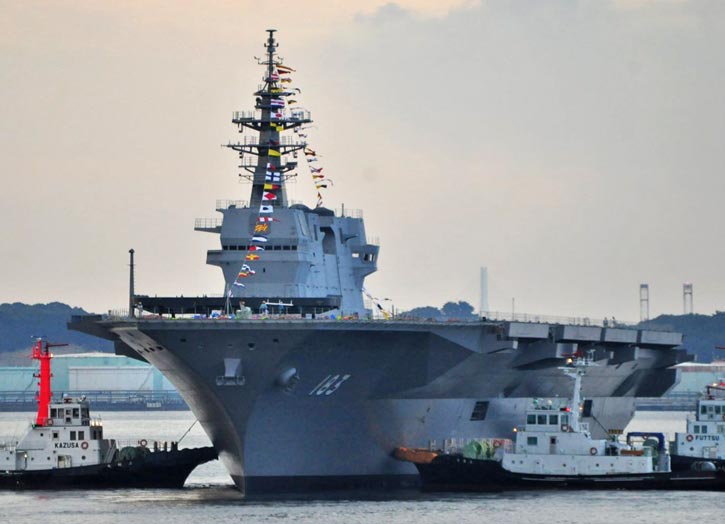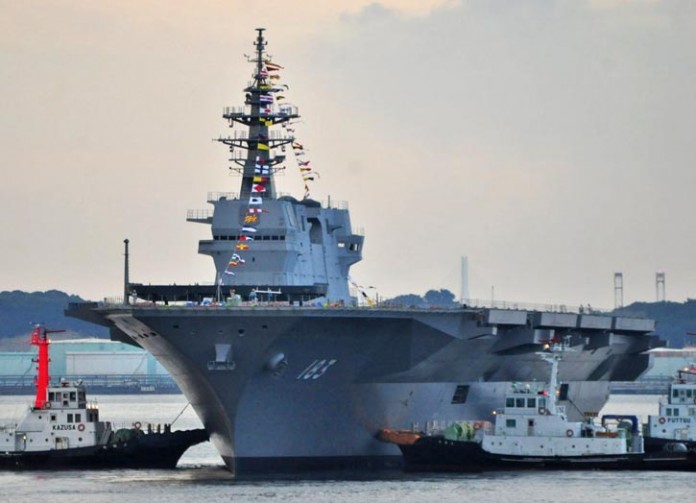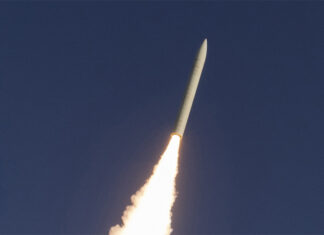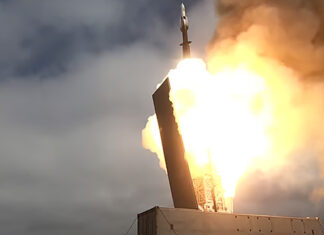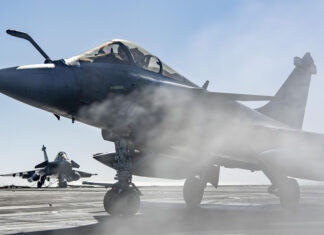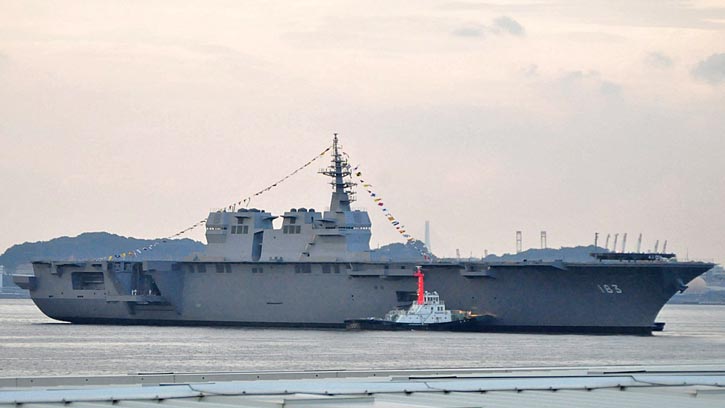
The new Izumo-class helicopter carrier is undergoing extensive sea trials since late September, in preparation of the acceptance of the new carrier by Japan’s Self Defense Forces Navy.
JDS Izumo helicopter carrier is the first of two 30,000 ton (full load) Izumo-class ‘helicopter carrier destroyer’ (DDH) class vessels to be commissioned next year. Unveiled last month at the Yokohama port, south of Tokyo, JS-183 Izumo, is the biggest warship in Japan’s fleet since World War II, has been described by the Chinese media as an “aircraft-carrier in disguise”. Although the is configured with a large flight deck and hangars, designed to accommodate up to 28 helicopters, Izumo does not have catapults or arresting cables nor a ‘ski jump’ curved deck, assisting short take off of conventional aircraft. The Japanese Navy is highlighting the vessels’ ability to quickly respond to emergency or natural disasters.
The construction of the first ship of the class began in 2011 at an IHI Marine United shipyard in Yokohama, at a cost of $1.5 billion (113.9 billion yen). Commissioning of the first of class is currently scheduled for 2015 with the second ship of the class, yet unnamed, to follow in 2017.
Once commissioned, these Izumo-class vessels will more than double the current anti-submarine, anti-ship, and amphibious assault capabilities of the Chinese Navy, over the current force consisting of two helicopter carriers, operating the Shirane-class helicopter carrying destroyers, accommodating 9-10 helicopters. Those vessels are planned for decommissioning soon.
The Japanese navy also operates two 20,000 ton Hyūga-class helicopter destroyers – Hyūga and Ise, commissioned in 2009 and 2011. Each is configured to carry up to 18 helicopters. These vessels typically operate three SH-60K and one MCH-101 mine sweeping helicopters. Hyūga class carriers are also equipped with Mk 41 VLS common launcher, armed with ESSM anti-air and ASROC anti-submarine weapons. Izumo class has more sensors and electronic warfare assets, designed for anti-submarine warfare and border-area surveillance missions, its self-defense capabilities are limited to close-in weapon systems (CIWS) such as the PHALANX and SEARAM.
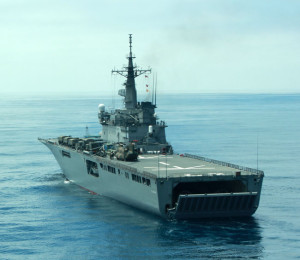
In addition to the larger capacity, the flight of JDS Izumo deck has 5 helicopter landing spots enabling simultaneous landings or take-offs. On deployments JS Izumo will carry a typical complement of 14 helicopters, seven ASW helicopters and two SAR helicopters. In addition, the ship will be able to transport 400 marines, 50 trucks and supplies.
Some analysts have speculated the Izumo could be adapted to carry F-35B (STOVL) and V-22 Osprey tilt-rotor aircraft, but sofar official Japanese authorities have not addressed these speculations. A similar platform designed to operate those aircraft is twice as large as the Izumo – American LHA-6 – USS America – has recently been commissioned with the US Navy.
